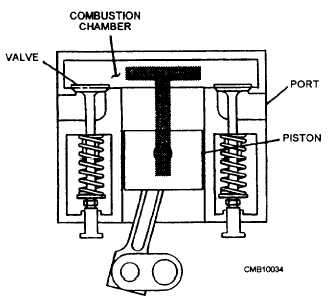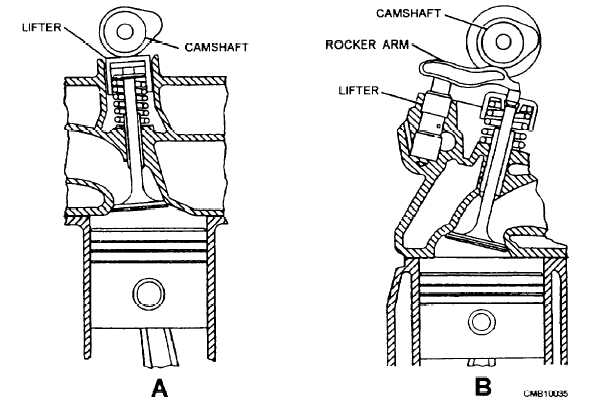
Figure 2-14. - T-head engine.
valves are located in the engine block. The intake valves in the head are actuated from the camshaft through tappets, pushrods, and rocker arms. The exhaust valves are actuated directly by tappets on the camshaft.
T-HEAD (fig. 2-14) - The intake and the exhaust valves are located on opposite sides of the cylinder in the engine block, each requires their own camshaft.
SINGLE OVERHEAD CAMSHAFT (fig. 2-15) - The camshaft is located in the cylinder head. The intake and the exhaust valves are both operated from a common camshaft. The valve train may be arranged to operate directly through the lifters, as shown in view A, or by rocker arms, as shown in view B. This configuration is becoming popular for passenger car gasoline engines.
DOUBLE OVERHEAD CAMSHAFT (fig. 2-16) - When the double overhead camshaft is used, the intake and the exhaust valves each operate from separate camshafts directly through the lifters. It provides excellent engine performance and is used in more expensive automotive applications.
Q6. Other than construction, what three things differ in gasoline and diesel engines?
Q7.What type of cylinder arrangement is used when height is a consideration?

Figure 2-15. - Single overhead camshaft configurations.
Continue Reading